2023 – a year where earnings go down and markets go up?
US markets rose 6% for the fourth quarter of 2022, although the increase was not enough to keep the year from being the fourth greatest decline in equity markets since 1945 (-18% YTD). In the other three cases, the equity market return in the following year was greater than 20%. What made 2022 particularly difficult for investors was that the bond market also declined substantially. Since 1928, this was the first year that the S&P 500 index and a portfolio of US 10-year treasury bonds both declined more than 10% in the same year, according to Charlie Bilello.
One reason for caution next year is the prospect of declining corporate earnings for 2023. Mike Wilson, from Morgan Stanley, who has thus far correctly anticipated market declines caused by rising interest rates, has forecast that the index will end 2023 at 3,900, slightly above today’s level. This muted return, according to Morgan Stanley, will be due to falling corporate earnings. Historically, however, markets have aways “looked ahead”. Since 1960, for example, there have been 13 years (according to NYU Stern School of Business) where the S&P 500 index’s earnings have been negative. In those 13 years, the average price return for the calendar year prior has been 4.6%, while the average price return for the year of the earnings decline has been 7.1%. Markets tend to decline ahead of bad news, rather than in conjunction with bad news.
Despite these positive signs, 2022 should serve to remind us about the difficulty of forecasting. A year ago, not one member of the Federal Reserve Board believed that interest rates for 2022 needed to be above 1.1% for 2022. Similarly, although PCE (Personal Consumption Expenditures- the Federal Reserve’s preferred measure) inflation was rising in 2021, the highest expected inflation figure was 2.5% for 2023. Now, although inflation is falling, not one member of the Federal Reserve expects inflation below 3%, with not one member advocating for interest rates below 4.9% for 2023. The conclusion from this is not that the Federal Reserve knows everything now or that they knew nothing a year ago, rather it should be that forecasts should only form part of the picture when investing.
For the rest of the note, we will look at the performance for some S&P 500 companies, which we have grouped to try and understand themes which have emerged over the past year, and how many of the expectations have been re-based due to the substantial increase in inflation and interest rate expectations. Given the volatility of the last three-year corporate earnings, we have looked at three-year average returns to help “smooth out” the dramatic changes of 2020, 2021 and 2022. The aim is to try and underline that the S&P 500 is not a homogenous entity, and that there are constantly different themes competing for attention.

The Former High Flyers
It is impossible to discuss earnings for next year without considering the outlook for the former high-flyers. This group is referred to in shorthand as “tech stocks”, but they include shares across many different sectors such as Technology (Apple, Microsoft), Consumer Discretionary (Amazon, Tesla, Home Depot), Communications (Meta, Alphabet) and Healthcare (such as Zoetis). The selection below is not exhaustive but nevertheless comprises 22% of the S&P 500 index. Looking at the selection, one can see that the last decade has seen a dramatic improvement in their earnings – growing 15% annualized when comparing the 2020-2022 average to the 2010-2012 average.
There has been lots to like about this group of shares over the last ten years- high net incomes off a very low asset base, low levels of debt and double-digit earnings growth. Capital has been returned to shareholders in the form of share buybacks, although this has been in some cases offset by increased share issuance. One difficulty with this group has been the valuation. In 2012, many amongst the group were priced well above 30 times earnings, with only Apple and Microsoft at more moderate valuation levels. Valuations have now converged, while over the decade, portfolios that have not included this group of high flyers (which have returned 20% annualized over ten years) have lagged the index.
This year, the narrative has changed- the earnings growth expectations have been reduced and investors with high allocations to these shares have lagged the markets – the average decline of -34% is significantly more than the S&P 500 index (-18%). This group remains more expensive than the market, at 24x earnings versus a market P/E ratio of 17x.

The Inflation Winners
This year, investors with an allocation to “inflation winners” have been able to avoid the worst of the market’s return. This group’s 9% YTD return compares favourably with the -32% witnessed by the earlier group. Although inflation winners brings to mind the energy sector, we have included allocations to materials, financials, healthcare, consumer staples and technology company ADP (which manages 1 in 6 payrolls in the United States).

This group’s percentage in the S&P 500 index is a more modest 12%, while its valuation, at 23x 2022 earnings, is similar to the previous group. Here, investors have paid for security of steady earnings and dividend income, with companies such as Air Products, Visa and Procter & Gamble, rewarded with premium valuations.
The ten-year average earnings growth, at approximately 6% a year since 2012, is much lower than the earlier group, while Merrill Lynch’s analysts are less bullish on the group as a whole. The return on net assets, at approximately 17%, is half that of the earlier group. Part of the reason for the lower return on assets has been companies in the financial sector such as Goldman Sachs, where regulation has restricted the ability to deliver share buybacks or make further acquisitions. While Chevron’s 2022 net income compares favourably to its asset base, the average income over the past three years is closer to 11% of its net assets.
2023 has seen these shares outperform the index despite the average expected two-year growth has also declined for this group, from 8% at the beginning of the year to 6%. An allocation to shares that do well in inflationary times appears prudent, as higher inflation may persist longer than expected.
The “below-average P/E ratio” shares
The high-flying shares have come down in valuation over the year, while the inflation winners have largely enjoyed a positive year, warranting a premium valuation over the market.
The group below (which is a much smaller 4% of the index) includes those shares that have helped the S&P 500 index’s valuation drop to 17.5x earnings, from 21x earnings at the beginning of the year. This group, all with earnings over $1bn, show some of the areas of concern for the market. Financials are included amongst in to the cheaper shares, such as JPMorgan and Citigroup, where investors are already looking to a world where interest rates decline and defaults rise as a result of a recession. Linked to this are homebuilders such as Lennar, while semiconductor shares and some “Covid” winners have not been rewarded with premium valuations as the market views the gains as temporary.
This group has tripled their earnings in the last ten years. Although earnings have tripled, the share prices have not kept up with this earnings increase. As a result, many on the below list are now more attractively valued today than ten years ago. Their 20% decline in 2022 has helped to improve the valuation, although so far these investments have not performed as they have not had the share price return of previous years to offset 2022’s decline. Some exposure to discounted shares is warranted, too, as lower valuations can offer support during times of market volatility.


